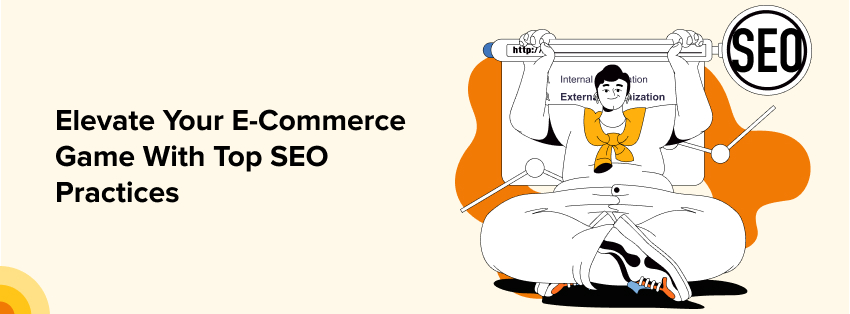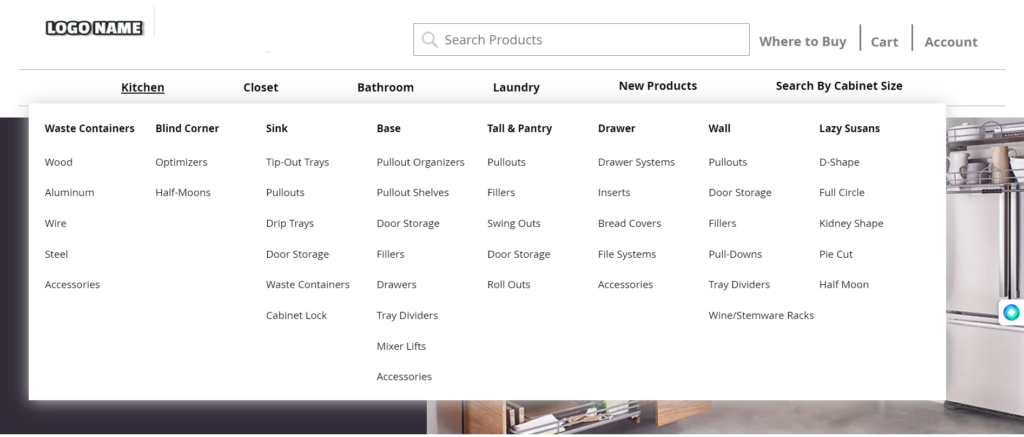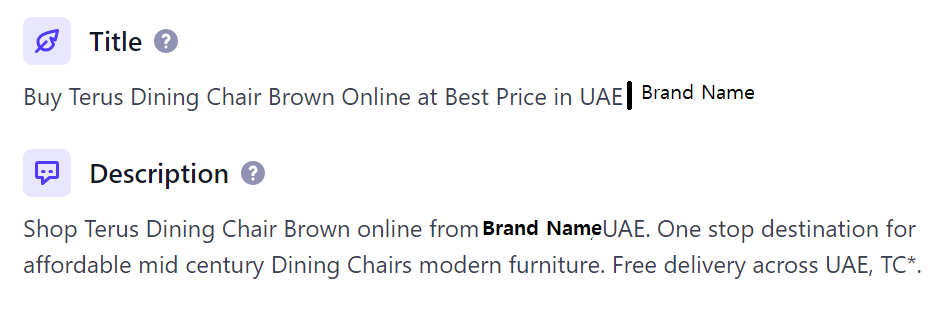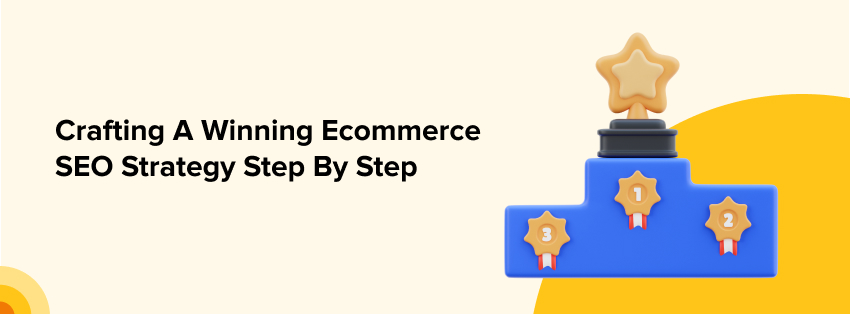
Visibility is of utmost importance for any successful online business. That’s how people find out about your offerings and become your customers. Search Engine Optimization (SEO) gives a strategic route to increase a brand’s visibility and makes achieving the desired results with the right and long-term approach possible. However, the SEO approach differs for e-commerce websites.
What is SEO for E-commerce?
E-commerce websites are heavy and have different navigation, payment gateways, and hundreds of product pages. Naturally, the SEO approach will also be different. The goal is to improve the website’s rankings in search results and give a memorable experience to encourage increased sales and spread word of mouth. But how do you get started?
In this blog, we will walk you through the essential steps to optimize an e-commerce website for search engines. We all have advanced e-commerce SEO tips to help you implement effectively. So, make sure you read till the end.
Best Practices for Your E-commerce SEO Strategy

1) Use the Right Keywords
Keywords are the building blocks of all SEO strategies. Begin by researching and selecting the right keywords for your e-commerce niche. Think about what your potential customers are searching for. Tools like the Google Keyword Planner can be immensely helpful in this regard.
2) Conduct Competitor Research
Keep an eye on your competitors. What keywords are they targeting? What kind of content are they producing? Analyzing your competition can provide valuable insights to help identify gaps in your SEO strategy.
3) Focus on Homepage SEO
Your homepage is your digital storefront. Ensure it’s optimized with relevant keywords and a clear, user-friendly design. A well-structured homepage not only improves SEO but also enhances user experience.
4) Simplify Site Architecture

A clean and logical site structure is crucial for SEO. Organize your products into categories and subcategories. Ensure navigation is straightforward so search engines and users can find their way around.
5) Optimize Product Pages

Individual product pages are where the magic happens. It is vital to optimize the on-page elements of the specific product pages to grow its traffic and acquire new customers. However, for e-commerce websites, on-page SEO is not limited to meta titles, meta descriptions, inserting keywords, and heading tags. You must optimize each product page with unique, keyword-rich descriptions, high-quality images, and customer reviews. It will not only boost SEO but also improve conversion rates.
6) Optimizing Product Descriptions
Product descriptions need to be well-written and effective, with incorporated targeted keywords.

Moreover, including complete details in keyword-rich descriptions and calls to action (CTAs) will provide the desired visibility in the search results. Include testimonials to increase credibility.
7) Images Optimization
E-commerce websites have a large chunk of images. Thus, it sometimes becomes the most neglected aspect of on-page SEO. In hindsight, photos are an excellent communication tool to grab audiences’ attention. However, image optimization is not limited to high-quality images. For effective SEO, ensure you provide captions with alt tags, use keywords in file names, and keep the image size small (without impacting image quality, of course).
8) Feature Reviews
Reviews give consumers the crucial information they need to balance the advantages and disadvantages of a product and decide whether to buy it. Additionally, they increase conversion rates and aid in establishing confidence with potential clients. Sending automatic messages to customers after each purchase will encourage them to post reviews. Once they have submitted a review on your site, you can also build up email campaigns to give them reminders or offers.
9) Use Responsive Design
Mobile-friendliness is a must. With most users accessing e-commerce sites on mobile devices, a responsive design ensures that your website’s look and feel aren’t distorted and functions well on screens of all sizes. Google rewards mobile-friendly websites with higher rankings.
10) Reduce Page Load Speed
Speed matters. Slow-loading pages can lead to high bounce rates. You can optimize your website’s speed by leveraging browser caching, compressing images and minimizing unnecessary scripts.
11) Create Quality Backlinks for SEO E-commerce
Creating Quality Backlinks on reputable websites can significantly boost your SEO strategy. You can build relationships with bloggers or influencers and collaborate to create shareable content that would help you earn high-quality backlinks and boost your website traffic.
12) Avoid Duplicate Pages and Content
Duplicate content can be a major turn-off for your visitors and it also badly hits your brand’s reputation. It is essential to employ experts to create fresh and engaging content for each page and product, even in bulk.
Steps to Develop an Effective Ecommerce SEO Strategy

You have understood by now why developing an effective e-commerce SEO strategy is crucial for improving your online store’s visibility and driving more organic traffic. Here are a few practical steps you can follow to get started!
1. Keyword Research: Conduct keyword research to identify a set of short-tail and long-tail keywords that resonate with your products or services. Google Keyword Planner, SEMrush, and Ahrefs are some of the most popular tools for finding keywords with a high search volume and low competition. Remember to take advantage of niche-specific long-tail keywords.
2. Competitor Analysis: Keep a close eye on your competitor’s action to stay ahead. Analyze their websites to find which keywords they target and how they present their products. Find gaps in their strategies and improve yours based on it. You can ethically utilize their weaknesses to divert the traffic to your products.
3. On-Page Optimization: Include target long-tail keywords in your blog posts, category pages, and product pages. Ensure that your product descriptions are to the point and engaging. They should have keywords and must encourage the readers to take action. Pay special attention to improving header tags, meta titles, and meta descriptions.
4. Technical SEO: Urgently address technical issues on your website, such as broken links, duplicate content, and slow page loads. They leave a bad user experience and badly affect the SEO. Also, ensuring that your website is mobile-friendly and responsive to different screen sizes is vital.
5. Site Architecture: A clear navigation structure goes a long way to improve your SEO efforts. It facilitates content discovery for both users and search engines. One way to effectively achieve this is to classify and sub-classify your products sensibly.
6. Content Development: Create helpful, high-quality content that meets your target audience’s requirements and inquiries. You can start a blog to offer insightful information about your products or sector. Moreover, utilize content marketing to draw in and keep your audience interested.
7. Link Building: Link building accelerates the process. However, creating trustworthy backlinks from websites in your niche or sector is essential. Pay attention to organic link-building techniques like influencer outreach, guest posting, and engaging content.
8. User Experience (UX): Prioritize user experience by enhancing site speed, optimizing visuals, and streamlining navigation. Make sure the checkout procedure is seamless to lower cart abandonment rates.
9. Local SEO: If you operate a physical business or cater to a particular region, consider optimizing for local search. Make a Google My Business listing and confirm it.
10. Monitoring and Analytics: The work does not end after creating and implementing an SEO strategy. You need consistent monitoring and analyses to measure the effectiveness of your website. You can set up Google Analytics and Google Search Console to regularly track user behavior, conversion rates, organic traffic, and ranking changes. Utilize the data-driven insights to make changes and improve strategy.
11. Consistent Updates and Maintenance: SEO is a continuous process. You need to keep your content current and update/revamp it frequently to keep up with algorithm updates and changing market scenarios.
12. Social Media Integration: Consider combining social media marketing with your SEO efforts to improve online visibility and interact with your audience. It can be a game-changer if done right.
13. Monitoring and Adjusting: Constantly monitor the success of your SEO approach. Be open to feedback and ready to modify and adapt based on performance indicators and market trends.
Conclusion
E-commerce SEO is a continuous process that can notably impact your online store. It can help you increase the exposure of your website, increase traffic and sales by selecting the appropriate keywords, structuring your website optimally, and keeping up with current trends. Remember that SEO requires ongoing work to remain relevant in the competitive e-commerce world. So, include the correct set of people, incorporate the proper practices, and start your journey to e-commerce SEO success!








